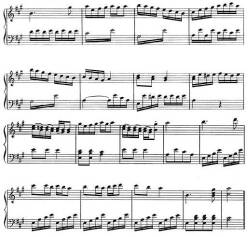| 1 The Eastern roots and folk relations of “verbunkos” dance music | CONTENTS | 3 “Verbunkos” song literature |
2 The earliest mementos of the new dance music up to the beginning of the 19th century
a) Dances from the Esztergom and the Sepsiszentgyörgy manuscripts (1750–1760)
{154.} b) Józser Bengráf: Hungarian dance (Ballet Hongrois, in the publication “Trois Divertissemens,” 1786)
c) József Bengráf: Dance piece from the collection “XII Magyar Tántzok Klávicembalomra Valók” (12 Hungarian Dances for the clavicembals, 1790)
{156.} d) Hungarian dance from the 1791 volume of the Viennese Hungarian peridocal “Stories of War and Other Famous Exploits”
{157-158.} e) Two dances from the series “Originelle ungarische Nationaltänze” (about 1800, the first is one of the sources of Kodály’s “Dances of Galánta,” the second one of the sources of Haydn’s “Hungarian Rondo”)
| 1 The Eastern roots and folk relations of “verbunkos” dance music | CONTENTS | 3 “Verbunkos” song literature |








